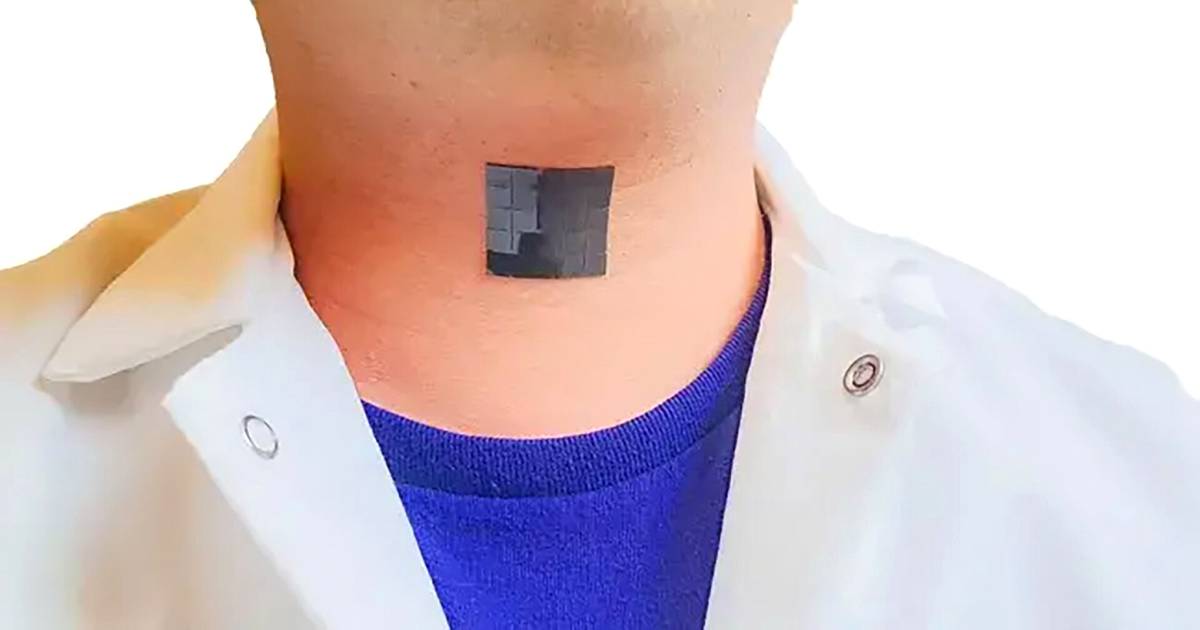The patch’s sensors pick up the vibration of sounds from the larynx – artificial intelligence interprets them into speech.
The usual looking like a patch – or a sticker – on the larynx, and that’s enough talk. The sound comes out even if the vocal cords have been cut or, for example, partially removed due to cancer.
Or when the voice is not quite right, for example due to an infection or surgery.
The patch, which looks almost ordinary, has a chip whose artificial intelligence interprets the movements of the vocal cords of the larynx. With it, small movements and vibrations are converted into speech.
The patch also produces a small electric current from the movements of the larynx. Therefore, the patch can be used without batteries or a battery.
Revolutionary the device is described in a scientific journal Nature Communications.
There may be a demand for the patch. A magazine about head and neck injuries Laryngoscope published a 2005 study that found that about 30 percent of people have at least one voice-related disorder in their lifetime
It has been studied that 3 to 9 percent of Americans have experienced a loss of voice, or aphonia. It manifests itself, for example, in the hoarseness of the voice. The voice can sink to a whisper or disappear completely.
The patch developed by an assistant professor of biotechnology Jun Chen at the University of California, Los Angeles.
Chen tells the university in the news, that the idea of the plasters arose after he himself had lectured for several hours. He felt his voice begin to break.
That led Chen to think about a soft patch that would help people speak conveniently and quickly.
Plaster based largely on research that the scientific journal Nature Materials published in 2021.
It has been known since the middle of the 19th century that the magnetic properties of certain rigid metals change when they are subjected to mechanical stress.
An example of this is the alloy of iron and gallium named galfenol. Its magnetic state changes when the material is pressed or shaped.
Chen and his group showed that a soft material could also work like gafenol.
Small magnets are embedded inside the thin silicon on the sticker. The outer layers of the patch are made of soft and flexible elemental silicon.
The middle layer has silicon and micromagnets. Its magnetic field varies according to the movements of the throat muscles.
The layer is surrounded by two thin layers made of a coil of copper wire. They convert changes in the magnetic field into electrical signals.
The signals are fed into a machine learning algorithm. It converts electrical pulses into speech, he says website Science Alert.
Algorithm was practiced by subjects repeating five short sentences one hundred times. At the same time, the computer program followed the movements of the speaker’s larynx.
The test was limited to only eight people in the report. The tests were done with the same short sentences that the algorithm first learned, such as “Merry Christmas” or “I hope your exam goes well”.
The artificial intelligence thus learned to associate certain movements of the larynx with a certain sentence.
In the experiments, participants were also asked to “pronounce” words and sentences silently. Subjects recited them while standing, walking and running.
The algorithm achieved about 95 percent accuracy. The patch has not yet been tested in people with speech disorders. The prototype of the patch should now be duplicated and extensively tested.
